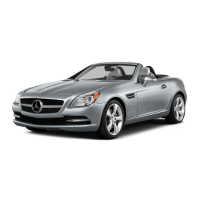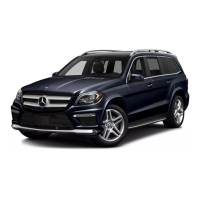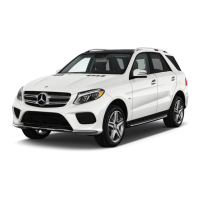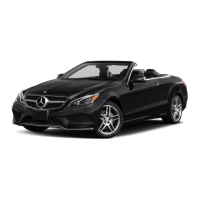Example: cap and coolant expansion tank
Checking the coolant level
X
Stop your vehicle as far away from traffic as
possible on level ground.
X
Switch off the engine.
X
Secure the vehicle to prevent it from rolling
away.
X
Open the hood (Y page 218).
X
Slowly turn cap : half a turn counter-clock-
wise to allow excess pressure to escape.
X
Turn cap : further and remove it.
X
Check the coolant level.
If the coolant reaches the maximum mark on
coolant expansion tank ;, there is enough
coolant in coolant expansion tank ;.
Adding coolant
X
If the coolant drops under the minimum mark
on coolant expansion tank ;, add coolant to
the maximum mark.
Observe the information on coolant mixture
ratio and water quality in the "Technical data"
section (
Y page 283). To prevent damage to
the engine cooling system, use only approved
corrosion inhibitor and antifreeze that com-
plies with the Mercedes-Benz Specifications
for Service Products.
X
Replace cap : and turn it clockwise to
tighten.
X
Start the engine.
X
After approximately 5 minutes, switch off the
engine and allow it to cool down.
X
Check the coolant level again and add coolant
if necessary.
X
Close the hood.
Brake fluid
G
WARNING
Service products may be poisonous and haz-
ardous to health. There is a risk of injury.
Comply with instructions on the use, storage
and disposal of service products on the labels
of the respective original containers. Always
store service products sealed in their original
containers. Always keep service products out
of the reach of children.
Brake fluid is hazardous to health. Also observe
the safety notes in the "Service products and
capacities" section (
Y page 277).
G
WARNING
The brake fluid constantly absorbs moisture
from the air. This lowers the boiling point of
the brake fluid. If the boiling point of the brake
fluid is too low, vapor pockets may form in the
brake system when the brakes are applied
hard. This would impair braking efficiency.
There is a risk of an accident.
You should have the brake fluid renewed at
the specified intervals.
!
Brake fluid corrodes paint, plastic and rub-
ber. If paint, plastic or rubber has come into
contact with brake fluid, rinse with water
immediately.
Have the brake fluid renewed every 2 yearsat a
qualified specialist workshop. Observe the infor-
mation on brake fluid in the "Technical data"
section (
Y page 283).
Check the brake fluid level regularly, e.g. weekly
or when refueling.
Engine compartment
223
Maintenance and care
Z

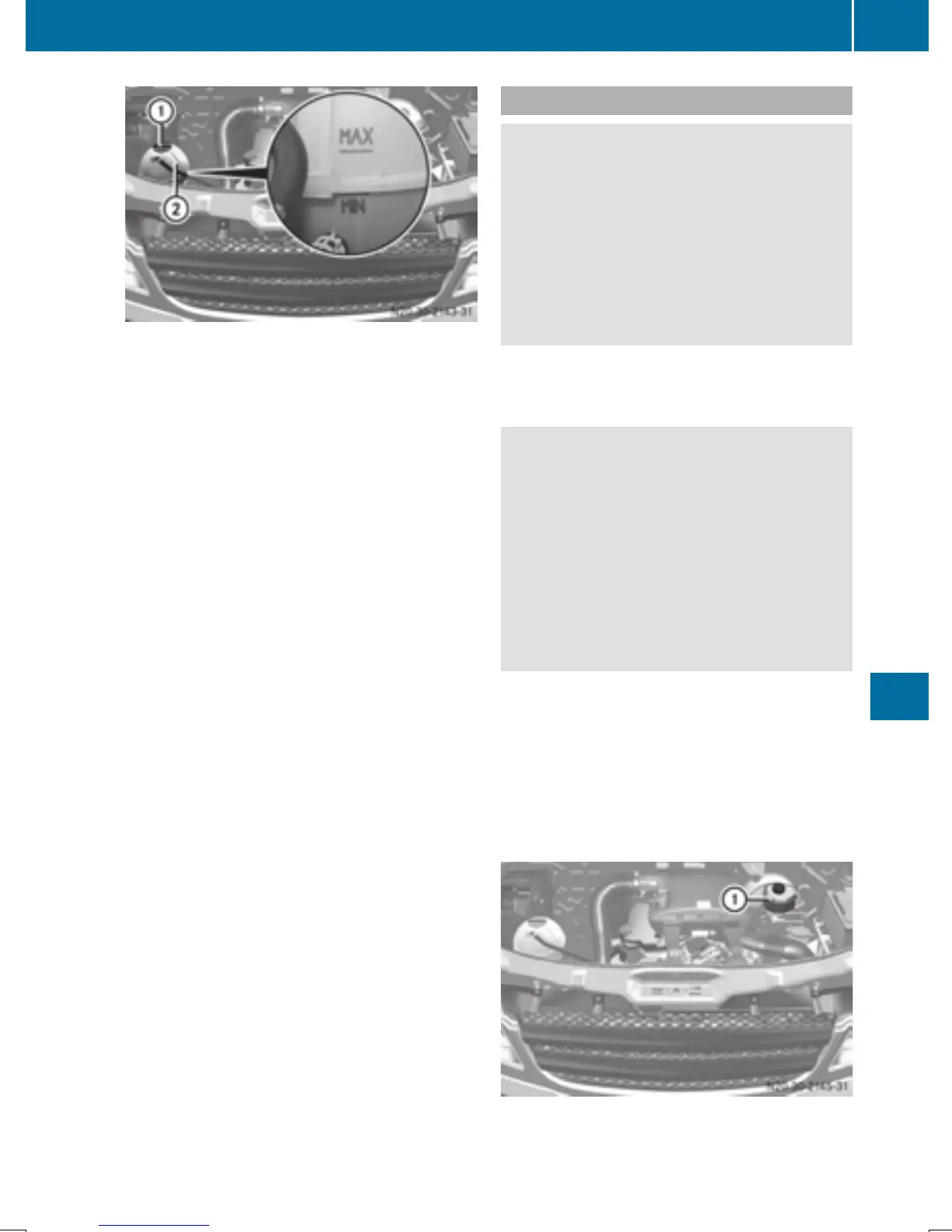